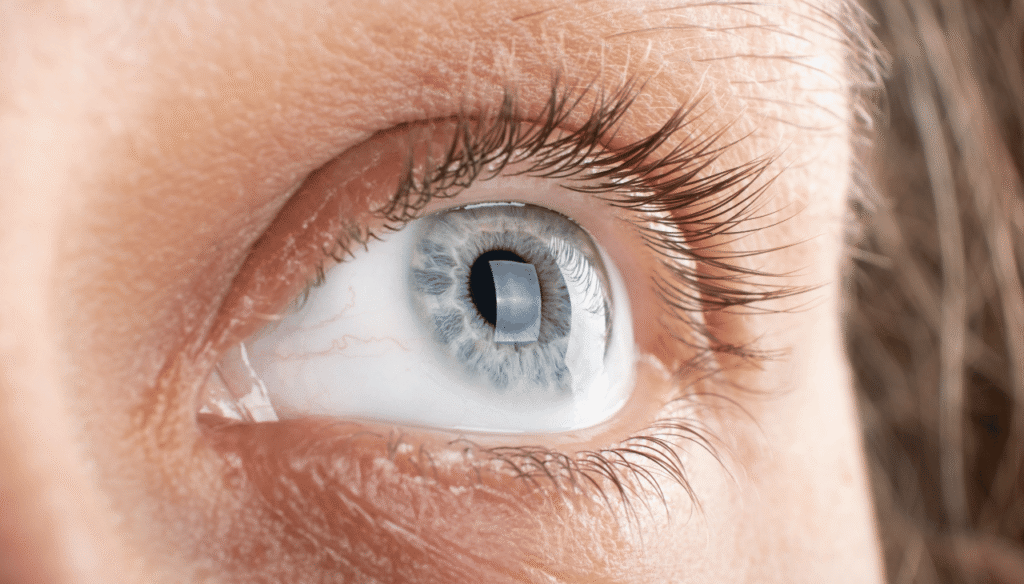
Corneal Disorders: A Complete Guide to Eye Health and Vision Protection
The human eye is a complex and delicate organ, and the cornea plays a critical role in maintaining clear vision. Corneal disorders can significantly affect the quality of life if left untreated. This blog offers an in-depth exploration of corneal disorders, covering their types, causes, symptoms, diagnosis, and available treatments. Whether you are a patient, a caregiver, or simply someone eager to understand eye health, this comprehensive guide is for you.
The cornea is the transparent, dome-shaped outer layer of the eye that covers the iris, pupil, and anterior chamber. It serves as the eye’s primary focusing element and provides protection against dust, germs, and harmful UV rays.
Importance of the Cornea:
- Helps focus light onto the retina.
- Acts as a protective barrier.
- Maintains the eye’s structural integrity.
When the cornea is damaged or affected by disease, vision can become blurry, painful, or even completely impaired.
Common Types of Corneal Disorders
1. Keratitis
Keratitis is an inflammation of the cornea, usually caused by bacterial, viral, fungal, or parasitic infections. It may also result from injury or wearing contact lenses improperly.
2. Corneal Ulcer
A corneal ulcer is an open sore on the cornea, often stemming from untreated keratitis. It can cause severe pain, redness, and vision loss if not promptly treated.
3. Keratoconus
Keratoconus is a progressive thinning and bulging of the cornea into a cone-like shape. This can lead to distorted vision and increased sensitivity to light.
4. Corneal Dystrophies
Corneal dystrophies are genetic conditions where abnormal material accumulates in the cornea. Types include Fuchs’ dystrophy and lattice dystrophy, leading to clouded or blurred vision.
5. Corneal Scarring
Scarring can result from injuries, infections, or previous surgeries, causing vision obstruction.
6. Dry Eye Syndrome
Chronic dry eye can damage the cornea over time, leading to discomfort, redness, and blurred vision.
- Infections: Bacteria, viruses, fungi, and parasites.
- Injuries: Accidents, scratches, or burns.
- Contact Lens Overuse: Improper lens hygiene or extended wear.
- Genetics: Inherited dystrophies and keratoconus.
- Autoimmune Diseases: Conditions like rheumatoid arthritis.
- Surgical Complications: Post-cataract or refractive surgery.
Symptoms of Corneal Disorders
- Blurry or distorted vision
- Eye redness and swelling
- Eye pain or discomfort
- Sensitivity to light (photophobia)
- Excessive tearing or dry eyes
- Feeling of a foreign body in the eye
- Decreased visual acuity
Diagnosis of Corneal Disorders
Timely diagnosis is essential to prevent vision loss. Eye specialists may use:
1. Slit-Lamp Examination
Allows detailed inspection of the cornea, iris, and lens.
2. Corneal Topography
Maps the curvature of the cornea, crucial for diagnosing keratoconus.
3. Pachymetry
Measures corneal thickness, helpful in detecting dystrophies.
4. Microbial Cultures
Identifies the cause of infection.
5. Visual Acuity Test
Assesses the clarity of vision.
Treatment Options for Corneal Disorders
1. Medications
- Antibiotics for bacterial infections.
- Antiviral drugs for viral keratitis.
- Antifungal treatments for fungal keratitis.
2. Corneal Transplant
Partial or full corneal transplant is often required for severe damage or advanced dystrophies.
3. Contact Lenses
Specialty lenses like scleral lenses can improve vision in keratoconus patients.
4. Corneal Cross-Linking (CXL)
Used to strengthen the corneal tissue in keratoconus.
5. Lubricating Eye Drops
Provide relief for dry eyes and minor irritations.
6. Laser Treatments
Procedures like Phototherapeutic Keratectomy (PTK) can remove surface irregularities.
Prevention Tips for Corneal Disorders
- Maintain proper contact lens hygiene.
- Protect eyes from injury and UV exposure.
- Seek prompt medical care for eye infections.
- Regular eye check-ups, especially if there is a family history of eye diseases.
- Avoid prolonged screen exposure to prevent dry eye.
High-Volume SEO Keywords for Corneal Disorders
- Corneal disorders
- Corneal disease symptoms
- Corneal transplant surgery
- Keratitis treatment
- Corneal ulcer symptoms
- Keratoconus treatment
- Dry eye syndrome management
- Best eye hospital for corneal diseases
- Corneal cross-linking procedure
- Contact lens complications
Conclusion
Corneal disorders, if not addressed timely, can lead to severe vision impairment. However, with early diagnosis, appropriate treatment, and proper eye care, many of these conditions can be managed effectively. If you experience any symptoms of corneal disease, consult an eye specialist immediately to protect your vision.
Here direct reference links for “Understanding Corneal Disorders: Types, Causes, Symptoms, Diagnosis, and Treatment”:
- National Eye Institute (NEI) – Corneal Conditions
🔗 https://www.nei.nih.gov/learn-about-eye-health/eye-conditions-and-diseases/corneal-conditions - Mayo Clinic – Keratitis (a common corneal disorder)
🔗 https://www.mayoclinic.org/diseases-conditions/keratitis/symptoms-causes/syc-20374110



